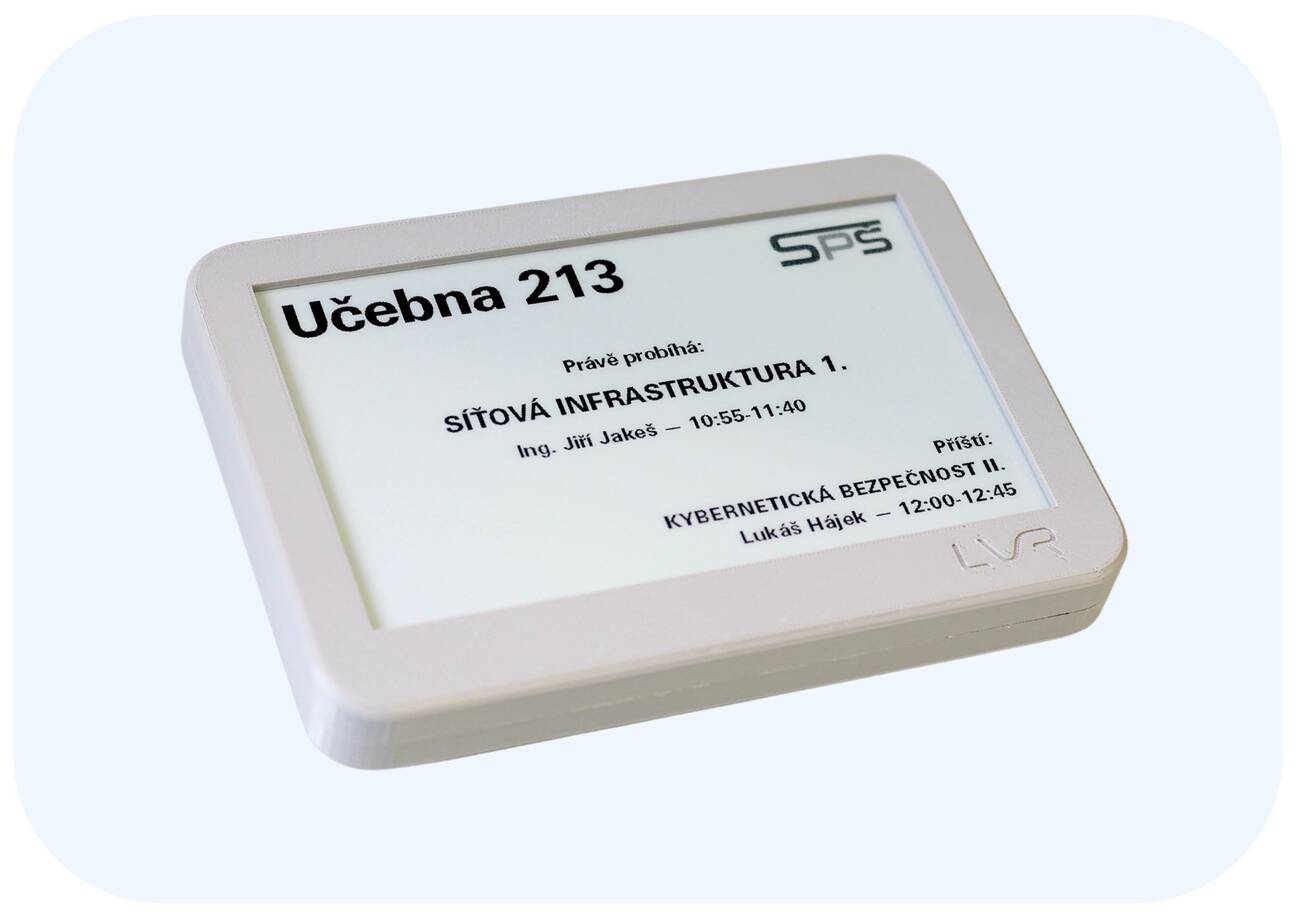Information system

A system for displaying information in text and simple graphics on monochrome displays with e-paper technology. It is characterized by minimal energy consumption, quick installation and can be controlled via a web portal or by connecting to the client's existing information system.
The initial impetus for the development of the display system was the need to create a stand-alone, fully modifiable system that responds to client needs for communicating information about activities taking place in individual rooms in the building.
What problems does it solve for its customers?
Most operators of meeting rooms, classrooms or other common areas have costs associated with signage in these spaces - delivering information about the event to the door of the room in question or to an information panel near the room. In practice, this means printing paper materials, delivering them to the venue and posting them. It is also necessary to ensure that these information leaflets are changed in good time to take account of the frequency of events.
Our display system takes care of all these tasks for you:
- providing a quick display of the required information without the need for a physical presence of an operator,
- enables long-term planning (including importing data from other planning and internal systems).
A typical example of use is a school and a school timetable for individual classrooms, showing the current lesson and the following lesson. Additionally, for example, an overview of standing in the courthouse or the occupancy of a meeting room.
Another possible use is the connection of the display system to the production software for displaying stock levels, order lists, etc..
The electronic system uses e-paper displays to display the required information. The individual displays are connected to a communication system in which the information to be displayed is entered.
The information to be displayed may be entered manually, but the system may be linked to other user data sources (MS Outlook or other scheduling system, internal information system).
Advantages of the imaging system:
- Simple installation of the display,
- very low energy consumption of the display (it consumes energy only when changing the display),
- simple preparation of texts for display: web application or direct connection to external applications (e.g. Bachelor used in primary and secondary schools).
Product development phase
The solution for displaying timetables for school classrooms is ready. In June, 20 displays will be installed in the environment of the Secondary Industrial School Prosek in Prague, where the system will be tested in practice.
The displays are now available and can be connected via LAN with PoE power supply.
Method of commercialisation
We are looking for a licensing partner for production and distribution.
Technical specifications
1. Imaging unit
The display unit consists of an e-paper display on which the required information or image is displayed according to the data sent from the user interface. The communication interface for standard applications is Ethernet, through which this unit is also powered by PoE. The entire device is then powered by the energy-saving STM32G0 processor, which is ready for a future battery-powered version if required. For demonstration and presentation purposes, we have also created a version of the display unit with a USB interface.
2. Communication
The imaging units communicate with the server application using the robust and widely supported TCP/IP protocol. The individual display devices have a slave-master relationship with the server. They are therefore easy to install into the customer's existing infrastructure. A classic Ethernet cable is used for the physical connection and a sophisticated LANTRONIX module takes care of the Ethernet communication. Internally, the display units and their subsystems communicate using the compact UART and SPI protocols.
3. User interface
The user interface consists of the operating software for the information system displays, which consists of several layers:
A module for updating the data displayed on the display. Because of this layer, it is possible to display image data or data created on the basis of HTML templates, i.e. predefined templates that determine the appearance of the displayed data and, according to the context, specific information, either of a textual or pictorial nature, is added to them. This module can be used to display data individually on demand or to display data automatically based on a timetable.
The next layer is the web interface. This offers graphical template editing to clearly insert data for display, create one-off and recurring events and assign them to individual displays. Depending on the specific scenario, this layer also offers management of the data that is added to the templates for each event, and management of users and their assigned roles, based on which the range of rights to each component of the web interface is determined.
Are you interested in this technology?
If you are interested in our technology, products and services, please contact the Technology Transfer Coordinator by phone or email:

